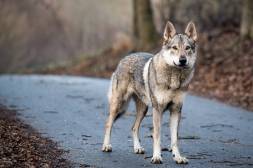What GPS Collars Reveal About Migration Patterns in Wild Animals

Understanding the migration patterns of wild animals has long been a challenge for researchers and conservationists. With the advent of GPS collar technology, we now have unprecedented insights into how animals move across landscapes, their behaviors during migration, and how they interact with their environment. This article explores what GPS collars reveal about animal behavior, particularly focusing on migration patterns.
The Technology Behind GPS Collars
GPS collars are equipped with satellite-based tracking devices that provide accurate location data of animals over time. These collars are designed to be lightweight and durable to minimize impact on the animal’s natural behavior. By continuously collecting positional data, researchers can map out detailed movement routes and stopover points used during migration seasons.
Insights Into Migration Routes and Timing
One key insight from GPS collar data is the identification of precise migration routes different species take annually. This technology reveals not only where animals travel but also when they initiate their migrations and how long they spend at various locations along the way. Such information helps scientists understand species-specific timing cues influenced by environmental factors like temperature and food availability.
Behavioral Patterns During Migration
Beyond just mapping routes, GPS collars enable observation of behavioral changes throughout migration. For example, data shows variations in travel speed depending on terrain or weather conditions and highlights critical resting areas essential for refueling energy reserves. Understanding these behaviors allows conservation efforts to prioritize protection for these vital habitats during sensitive times.
Impact on Conservation Strategies
The detailed movement data from GPS collars informs conservation strategies by identifying corridors that need preservation to ensure safe passage for migrating animals. It can also detect human-induced barriers like roads or developments that disrupt traditional routes, allowing targeted mitigation measures such as wildlife crossings or habitat restoration projects.
Future Directions in Wildlife Tracking
As technology advances, future GPS collars may integrate additional sensors measuring physiological parameters such as heart rate or stress levels alongside location tracking. Combining behavioral data with health indicators could provide deeper understanding of how migration impacts animal well-being under changing environmental conditions.
In summary, GPS collar technology has revolutionized our ability to study wild animal migration by offering precise real-time tracking combined with behavioral insights. These advances not only deepen scientific knowledge but also play a crucial role in shaping effective conservation policies aimed at preserving migratory species around the globe.
This text was generated using a large language model, and select text has been reviewed and moderated for purposes such as readability.











